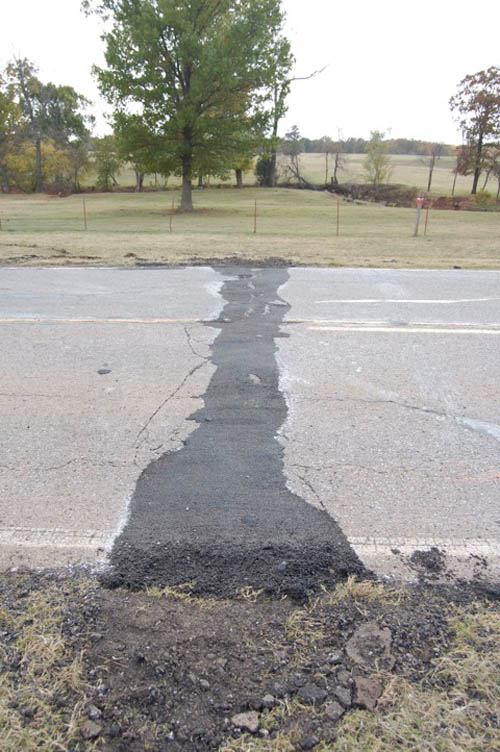Wastewater Injection Triggered Oklahoma's Earthquake Cascade

One of Oklahoma's biggest man-made earthquakes, caused by fracking-linked wastewater injection, triggered an earthquake cascade that led to the damaging magnitude-5.7 Prague quake that struck on Nov. 6, 2011, a new study confirms.
The findings suggest that even small man-made earthquakes, such as those of just a magnitude 1 or magnitude 2, can trigger damaging quakes, said study co-author Elizabeth Cochran, a seismologist with the U.S. Geological Survey.
"Even if wastewater injection only directly affects a low-hazard fault, those smaller events could trigger an event on a larger fault nearby," she told Live Science.
The Prague earthquake was the largest of thousands of quakes that rattled Oklahoma in late 2011. Three were magnitude-5 or stronger. The 2011 quakes struck along the Wilzetta fault, a fault zone near Prague. Earthquakes break faults like a boat plowing through thick ice — the fault zips open as the earthquake ruptures the fault, and then seals itself shut behind. Each of the three biggest quakes tore apart a different part of the Wilzetta fault, the researchers said. [Image Gallery: Deadly Earthquakes]
Triggered foreshock
The magnitude-5.7 earthquake near Prague was preceded by a 5.0 quake that hit a day earlier, on Nov. 5. This "foreshock" occurred near an active wastewater disposal well. The wastewater injection triggered the Nov. 5 earthquake, researchers concluded in a study published in March 2013 in the journal Geology. However, the Nov. 6 earthquake was farther from the wells.
"Just because two earthquakes occur close to each other in time and space doesn't necessarily mean they are related," said Cochran, who also co-authored the 2013 Geology study. "We wanted to look one step further and determine whether the stress change from the foreshock actually pushed the main shock rupture plane [the fault] to failure."
Get the world’s most fascinating discoveries delivered straight to your inbox.
Earthquakes linked with fracking are rarely triggered by the actual oil-and-gas extraction. Rather, these quakes are caused by fluid disposal in deep wells. Fracking, short for hydraulic fracturing, involves injecting water, sand and chemicals into the Earth to crack open rock and remove oil and gas. The millions of gallons of waste fluids are usually pumped back into the Earth via deep "wastewater injection wells." The wastewater can lubricate or jack open fractures and faults, triggering earthquakes.
Fault primed
In the new study, the researchers modeled the stress added to the Wilzetta fault by the Nov. 5 earthquake (the foreshock). The findings suggest that the first earthquake primed the fault for another, larger earthquake, which, in this case, hit the next day. The study was published March 7 in the Journal of Geophysical Research.
"When you have an earthquake, the stress goes up in some places and down in other places," Cochran said. "We determined that the mainshock [the Nov. 6 Prague earthquake] occurred in an area that had an increase in stress."
The boom in fracking in the central United States has paralleled an uptick in seismicity, with moderate-size earthquakes increasing in Colorado, Texas, Oklahoma, Ohio and Arkansas. The number of quakes in the central United States has jumped 11-fold in the past 30 years, according to the March 2013 Geology study.
Email Becky Oskin or follow her @beckyoskin. Follow us @livescience, Facebook & Google+. Original article on Live Science.



